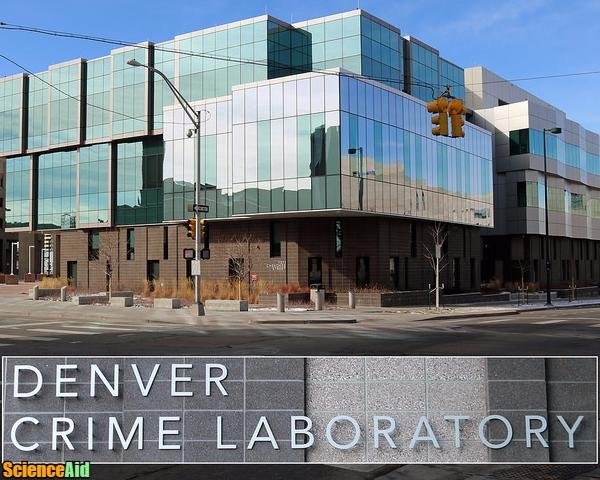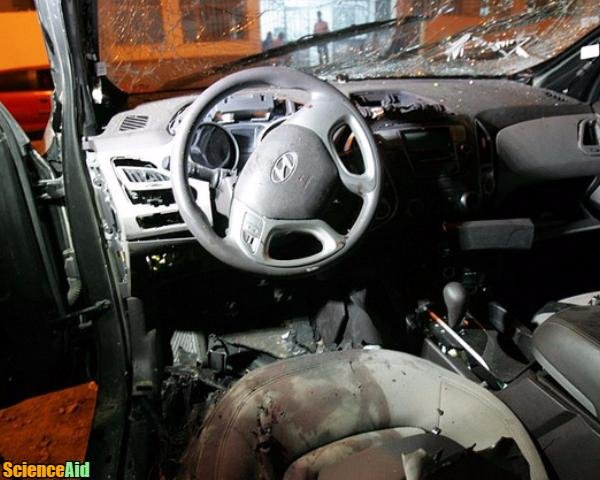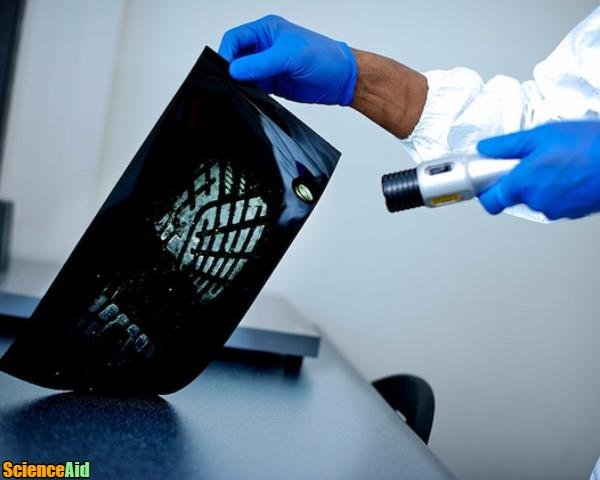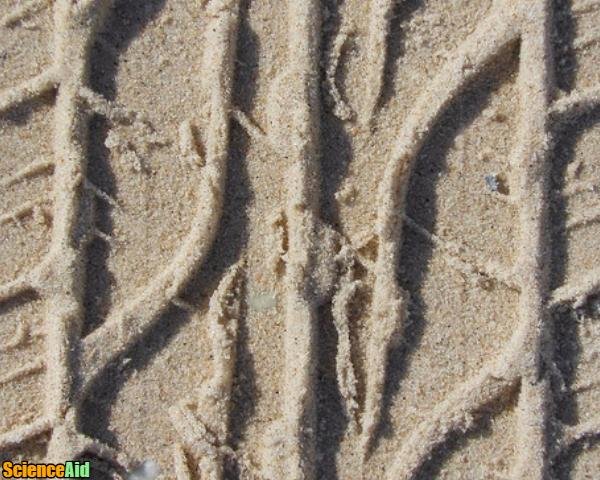Criminalistics
Edited by Kylieeleanne, Sharingknowledge, SmartyPants, SarMal
Criminalistics is a subdivision of forensics, concerned with locating, collecting and preserving evidence to aid in crime scene reconstruction and to examine in a forensics lab. The forensic specialists working in this field are often referred to as criminalists, crime scene technicians, investigators or examiners. Some jurisdictions mandate the presence of a crime scene technician at every major crime scene. Part of the job includes being ready to offer up testimony in a court of law; although criminalist' are usually brought forth to testify about contamination, cross contamination and chain of custody, some senior examiners have developed an expertise in blood splatter analysis, trace evidence, and drug identification. Criminalistics is a unique branch of forensics because it combines the police science model to record, identify and interpret the "minutia" or minute details of evidence with medical science disciplines such as Pathology, Serology, Toxicology, Odontology and, Psychiatry when interpreting physical and forensic evidence.
- 1The two professions are quite alike; although criminology more so deals with the examination of data to determine why a crime happened and how something like it could be prevented in the future. Both Criminology and criminalists are an essential part of major crimes investigations and crime labs.Most criminalists consider themselves professional criminologists, but few criminologists consider themselves criminalists.Advertisement
- 2They hold the standard for every other crime lab, anywhere. The FBI crime lab is the largest crime lab in the world, it is separated into four sections: Scientific analysis (DNA, firearms, tool marks, hairs, fibres, material analysis, Chemistry, and Toxicology) Questioned Documents; Special projects (film, photography, art, computer design) Fingerprinting; investigative operations such as lie detection. The FBI lab only deals with violent crime and works exclusively for the prosecution. The ATF lab handles explosives, bombs, arsons, trace evidence and deciphering of firearms ownership and usage, disaster response, field support and, some gang intelligence record keeping. This lab is very high tech and has always been held to a high standard. Just like the FBI lab, most other crime labs are separated into four divisions. A section for anything pertaining to fluid, a section for toxicology and poisons which deal with unknown substances, a section for trace evidence or microscopy (which includes anything that is so tiny it has to be looked at under a microscope) and lastly a section dealing with guns and ballistics.The most highly accredited crime labs in the world are the FBI crime lab and the ATF crime lab.
- 3These different types of evidence include but are not limited to biological evidence, ballistics, trace evidence, controlled substances, firearm and tool-mark and, impression evidence such as fingerprints, footprints, and tire tracks.Even though there is usually only four divisions in a crime lab, there are several different types of evidence that a criminalist would collect that would have to go to its respective division within the crime lab.
- 4
- 5Forensic ballistics expert will look at this evidence and use their knowledge of the effects and behaviour of firearms and projectiles and explosive devices to determine things like what type of firearm was used in a crime or what type of explosive was used; even information like where an explosive detonated from or from which direction a shot was fired. Experts in this field often match bullets and fragments to the weapons that alleged suspects own.Ballistic evidence is anything related to a firearm or explosive at a crime scene.
- 6Despite the differences, firearm and tool mark evidence go hand in hand with ballistics. This type of evidence looks at gunpowder patterning, the reconstruction of obliterated serial numbering from firearms and, trajectory reconstruction.Firearm and tool mark evidence can often be mistaken for ballistics evidence, while there are several similarities, there are also several differences.
- Firearm evidence can include, revolvers, pistols, rifles, shotguns, homemade firearms and, firearms that have been modified from semi- automatic to fully automatic. Even homemade and commercially manufactured silencers can be submitted to the crime lab for examination.
- The evidence firearms that are submitted to the crime lab are often test fired into a recovery box once all other examining has been done, so the test fired bullet can be collected and then compared to one found at a crime scene.
- These bullets will be put under a forensics microscope, to determine if they both have similar markings from being fired out of a suspect firearm. A firearm will most often time leave a similar marking on every bullet fired from it. The microscopic images will be entered into a computer program in which they will be compared to all other images that have been entered, this program can help to solve multiple firearm related cases that had been committed over the span of several weeks in which the same firearm was used.
- Test firing a weapon can also re- create gunpowder residue and chemical residue patterns which would then be compared to the patterns left on a victim or suspect.
- Tool marks are striations left by forceful contact between two objects of differing hardness, for example, the barrel of a firearm (harder object) leaves microscopic 'striae (linear grooves)' on the softer object ( the bullet) when fired. These striations can be used to link a tool found at a crime scene to its role in the crime, such as bolt- cutters or a hammer, being used to break a lock in the case of a break and enter or home invasion.
- Serial number restoration is used in cases where a serial number has been removed by grinding or over stamping; although there are Federal and state laws surrounding serial numbers and the illegality of removing them, there are still hundreds of cases a year, where serial numbers have been removed in order to make ownership untraceable. Serial numbers are almost always stamped onto farm equipment, firearms, vehicles, electronic equipment and industrial machinery. The restoration of destroyed serial numbering isn't always possible but sometimes chemical and physical restoration techniques can be used to make these numbers faintly readable once again.
- 7Trace evidence can be transferred between a victim and suspect by brief physical contact. An investigator will often take samples from under a victim's fingernails for examination, especially if there is a sign of a struggle, usually, a suspect's DNA can be found under a victim's fingernails if there is evidence the victim defended themselves.Trace evidence can be a number of this from glass and building materials too, rope, human hair, soil, textiles anything that has left a 'trace'.
- 8This evidence can include the substance itself, containers used to transport the substance, utensils used to manufacture or use the substance, or in the case of manufacturing, the component chemicals used to create an illegal substance. These substances can take the form of pills, powders, liquids, plant material such as leaves and mushrooms, crystalline materials (crystal methamphetamine) and cases such as MDMA or ecstasy can be embedded in paper or into foods like candy.Controlled substance evidence is evidence collected during an investigation involving illegal drugs.
- 9For instance, the marks that are left on a road or dirt, from vehicle tires. This type of evidence can include fingerprints, footprints and, certain types of tool marks.Impression evidence is the evidence left behind when two objects are pushed together and leave characteristics of one another on each other.
- 10Once all the evidence has been collected and submitted to a crime lab for examination, they will be used in conjunction with witness statements and confessions to solve criminal cases such as murder, home invasion, arson, sexual assault, robbery and many others. In cases of sexual assault or homicide, physical evidence is considered the number one determining the factor of a suspect's guilt or innocence.Evidence is considered to be one of the three in the 'Holy Trinity' for solving a crime.
Referencing this Article
If you need to reference this article in your work, you can copy-paste the following depending on your required format:
APA (American Psychological Association)
Criminalistics. (2017). In ScienceAid. Retrieved Apr 25, 2024, from https://scienceaid.net/Criminalistics
MLA (Modern Language Association) "Criminalistics." ScienceAid, scienceaid.net/Criminalistics Accessed 25 Apr 2024.
Chicago / Turabian ScienceAid.net. "Criminalistics." Accessed Apr 25, 2024. https://scienceaid.net/Criminalistics.
If you have problems with any of the steps in this article, please ask a question for more help, or post in the comments section below.
Comments
Article Info
Categories : Forensics
Recent edits by: SmartyPants, Sharingknowledge, Kylieeleanne










